|

by David Pratt
June 2005
from
ExploringTheosophy Werbsite
Contents
-
Introduction
-
The Doug and Dave scam
-
Crop-circle evolution
-
Characteristics
-
Scientific research
(updated
11/07)
-
Eyewitness reports
-
Anomalous effects
-
Geometry
-
Hoaxers and debunkers
-
Human interaction
-
Explanations
-
Meaning
-
Sources / credits
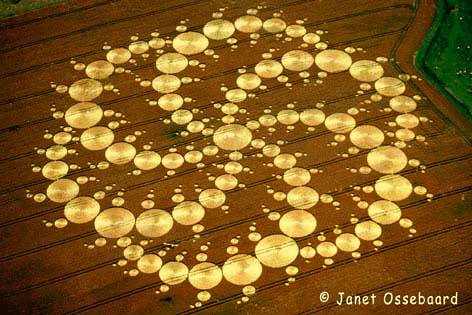
Fig. 0.1 Milk Hill,
Wiltshire,
12 August 2001.
The largest crop
pattern of all time, 800 feet across, consisting of 409 circles.
1. Introduction
Every year over 200 designs appear in crops around the world. These
patterns of flattened plants have been reported on every continent,
in around 30 countries, but the majority have appeared in southern
England.
Since the early 1990s, the original
simple circles have developed into huge, intricate, geometrical
patterns of stunning precision and beauty. Most appear in wheat,
barley and oil-seed rape, but they have also been reported in rye,
oats, flax, maize, sugar cane, peas, potatoes, sunflowers, grass,
fruit orchards, rice paddies, snow, and ice.
Over the years, crop formations have been attributed to a variety of
mundane causes: drunks armed with string and boards, wild young
farmers, disillusioned art students, out-of-work journalists,
over-application of fertilizer, interference from mobile phones,
squabbling birds, geometrically-gifted cows, and sex-mad hedgehogs.
Although the general public, mass media
and scientific establishment tend to dismiss the entire phenomenon
as the work of human pranksters, there is strong evidence that an
unexplained force and guiding intelligence are at work.
Back to Contents
2. The Doug and Dave scam
On 9 September 1991, the British tabloid Today ran a front-page
story headlined: ‘The men who conned the world’. The story claimed
that all the crop circles in England were the work of two
pensioners, Doug Bower and David Chorley, aged 67 and 62
respectively. Their tools included a four-foot plank of wood and a
ball of string, along with a piece of wire dangling from a baseball
cap to serve as a sighting device, enabling them to construct
perfectly straight lines by focusing on a distant object – at dead
of night!
To flatten the crop in areas that did not overlap tramlines (the
tracks made by tractors when spraying crops), they said they had
stood inside a tramline and then jumped or pole-vaulted into the
standing crop; this would involve pole-vaulting a distance of up to
35 feet – an Olympian achievement! They said that the idea of making
crop circles had come to them after a boring evening at the pub in
1978, and their only motive was to ‘have a laugh’.
Not only had they never been caught in
the act, but their wives had never even noticed their nocturnal
absence.

Fig. 2.1 Doug and
Dave demonstrated their skills
with this 1991 crop
formation – after a pint of beer too many by the looks of things.
They showed that they could create crude
circular designs in broad daylight – but lacking the geometrical
precision, complexity and beautiful crop lays found in the finest
formations. At that time, the ‘circles’ had already evolved into
complex pictograms, but Doug and Dave could not convincingly explain
how they had created these. They could not even duplicate on paper a
Celtic cross design they claimed to have made.
Confronted with evidence that they had
nothing to do with certain formations, they began to backtrack. Even
if their grossly exaggerated claim to have made 250 crop circles in
England since 1978 were true, that would still leave 1750 formations
in England and other countries unaccounted for, as well as numerous
pre-1978 formations.
This did not stop the public at large swallowing the idea that all
crop circles were made by humans. Many people find this far more
palatable than the possibility that unsolved mysteries are taking
place in the fields. So Doug and Dave certainly ‘conned the world’ –
though not in the way most people think!
Despite their ‘retirement’, the crop
circles were back as usual in 1992 – but without the intense media
interest.
Back to Contents
3. Crop-circle evolution
When Doug and Dave claimed to have invented the crop circle
phenomenon as a joke in 1978, they weren’t aware that almost 300
documented formations predated their alleged exploits. There are
sporadic reports of crop circles being found in England throughout
the 20th century. But reports actually go back several centuries
earlier.
In 16th and 17th century folklore we find stories about fairies and
elves seen dancing in the fields and leaving circles of trodden
grass. The earliest representation of a crop circle occurs in a
woodcut from 1678, which depicts the ‘Mowing Devil’ reaping a field
of oats into a flattened circle. The story behind it is that a
farmer refused to pay the amount asked by a particular reaper,
muttering that he would rather the Devil took his oats.
During the night strange sounds and
lights were heard and seen, and the following morning the farmer
found part of his crop lying in neat circles.

Fig. 3.1 The Mowing
Devil.
In 1686 a British scientist, Robert
Plot, published a book entitled A Natural History of Staffordshire,
which contained accounts of geometric areas of flattened plants
found on both arable land and pastureland. He describes not only
circles but also spirals and squares within rings, up to 150 feet
across. He reports that the soil under them was much looser and
drier than normal, and that a whitish, musty substance or hoar,
‘like that in mouldy bread’, was sometimes found on the plants.
He hypothesized that the designs were
created by lightning exploding from the clouds. In July 1880 the
science journal Nature published a letter from a scientist who
described finding multiple circular areas of flattened wheat on a
farm in southern England.
He suggested they were the result of
‘some cyclonic wind action’.
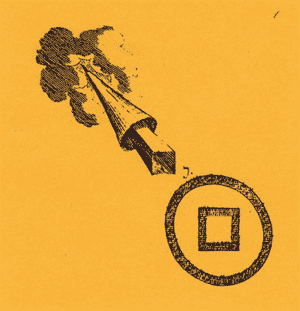
Fig. 3.2 One of
Robert Plot’s illustrations of a crop design.
Since the late 1970s the number of
circles has increased dramatically, especially in the southern
English counties of Wiltshire and Hampshire, and the designs have
become increasingly elaborate. Single swirled circles gave way to
multiple circles, sometimes arranged non-randomly. The first
quintuplet (a circle surrounded by four smaller, evenly-spaced
satellite circles) appeared in 1978. Later, quintuplets appeared
with rings connecting their outer satellites, creating ‘Celtic
crosses’.
Circles with multiple concentric rings
around them also started to appear.
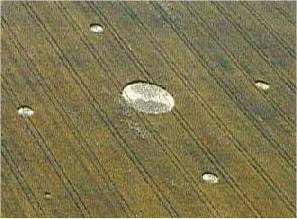
Fig. 3.3 A
quintuplet, Beckhampton, Wiltshire, 3 August 1988.
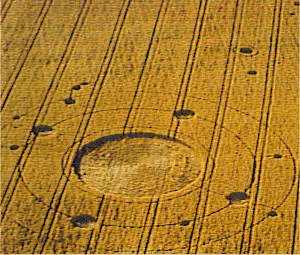
Fig. 3.4 Triple ringer, Warminster, Wiltshire, July 1990.
Note the seemingly
randomly-placed mini-circles or ‘grapeshot’, a common feature in the
early days.
1990 saw the first pictograms, consisting of long chains of circles,
rings, rectangles, straight lines, and tridents, ‘keys’ or ‘claws’.
Whales/dolphins and insectograms began to appear the
following year. Crop glyphs from 1994 included ‘thought bubbles’,
which by incorporating crescents mutated into glyphs resembling
spiders and scorpions.
That year also saw the first
astronomy-related glyphs, which include galaxies, asteroid belts and
planetary orbits. Since the late 1990s the formations have developed
into spectacular and incredibly complex geometrical designs or
mandalas. Sevenfold geometry first appeared in 1998, nine-fold
geometry in 1999 and eleven-fold geometry in 2000.
Since 1999 several crop formations have
created the illusion of being three-dimensional.

Fig. 3.5 Alton
Barnes, Wiltshire, 11 July 1990.
This huge pictogram
gained worldwide publicity and attracted thousands of visitors.
In total, over 10,000 crop formations
have been documented worldwide. Over 700 of them appeared in 1991.
Of the 229 formations reported from around the world in 2004, 33.9%
of them appeared in England, where crop circles tend to cluster
around sacred megalithic sites such as Stonehenge, Avebury and
Silbury Hill.
Other countries with crop circles
included Germany (13.2%), the USA (9.2%), the Czech Republic (8.4%),
and Italy (8.4%).
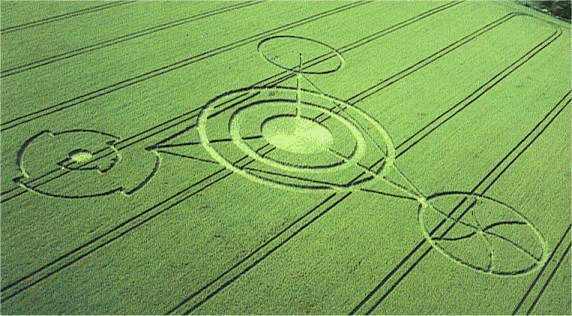
Fig. 3.6 The
‘Tetrahedron’, Barbury Castle, Wiltshire, 17 July 1991.
The day after it
appeared, a British newspaper ran a photo of the design with the
headline, ‘Now explain this one’.

Fig. 3.7 ‘Scorpion’ or ‘dragonfly’, Bishops Cannings, Wiltshire, 15
July 1994.
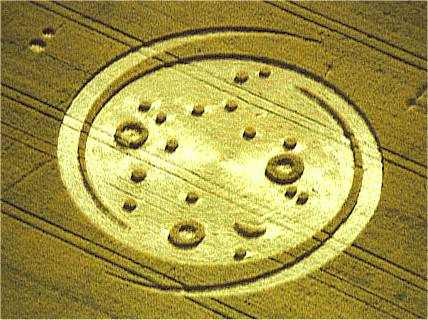
Fig. 3.8 Galaxy design, West Stowell, Wiltshire, 23 July 1994.
It has been
interpreted as showing a conjunction of planets in the constellation
Cetus that occurred in April 2000.

Fig. 3.9 ‘Spiderweb’, Avebury, Wiltshire, 11/12 August 1994.
The shimmering effect
is created by the crop being laid in opposing directions.

Fig. 3.10 Solar system glyph, Longwood Warren, Hampshire, 22 June
1995.
It depicts the Sun,
Mercury, Venus, the Earth’s orbit, Mars, and Jupiter’s orbit.
According to Gerald
Hawkins, it shows a planetary alignment that occurred on 6 November
1903,
the day the
Wright brothers proved that man could fly, and again on 11 July
1971, during Mariner 9’s journey to Mars.

Fig. 3.11 ‘Julia Set’, Stonehenge, Wiltshire, 7 July 1996.
This 115-metre-wide
spiral of 151 circles appeared in broad daylight in full view of a
busy road,
just opposite
Stonehenge, within a 15-minute time-window (according to testimony
from pilots,
a farmer, a security
guard, and motorists calling the police).
A professional
surveying engineer said it would take him about two full days to lay
out the design.

Fig. 3.12 ‘Koch fractal’, Milk Hill, Wiltshire, 8 August 1997.
Two engineering firms
estimated that staking out the 346 reference points required
to construct
the design prior to flattening the wheat would take 6.5 to 7.5 days,
or 11 days if done under cover of darkness.
Yet the formation had
definitely appeared overnight.

Fig. 3.13 The ‘Flower’ and ‘Grid square’ appeared on the same night,
Etchilhampton, Wiltshire, 1 August 1997.
The square within the
circle is gridded with 28 by 25 narrow, ruler-straight channels.

Fig. 3.14 Hackpen Hill, Wiltshire, 4 July 1999.

Fig. 3.15 3-D ‘ribbon’, Beckhampton, Wiltshire, 28 July 1999.

Fig. 3.16 14-pointed star, Roundway, Wiltshire, 31 July 1999.
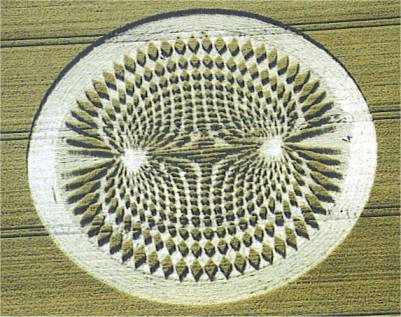

Fig. 3.17 ‘Magnetic fields’, Avebury Trusloe, Wiltshire, 22 July
2000.

Fig. 3.18 ‘The angel’, Great Shelford, Cambridgeshire, 25 July 2001.

Fig. 3.19 Ribbon design, Stonehenge, Wiltshire, 4 July 2002.

Fig. 3.20 Petal design, West Overton, 21 May
2003.
The plants in this
glyph had been gently brushed over into a near-vertical position, so
that from the air the formation is barely visible.
As the undamaged
plants recovered and rose towards their normal, upright position,
they did so in
alternate bundles, producing a rippling, standing-wave pattern.
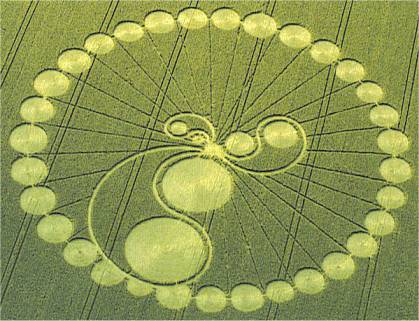
Fig. 3.21 Hackpen Hill, Wiltshire, 20 July 2003.

Fig. 3.22 Huish, Wiltshire, 20 July 2003.

Fig. 3.23 North Down, Wiltshire, 10 August 2003.

Fig. 3.24 600-ft-long formation, East Field, Alton Barnes,
Wiltshire, 20 June 2004.

Fig. 3.25 ‘Sun wheel’, 350 feet across, Silbury Hill, 19/20 June
2004.
This formation
appeared in outline the first night, and was completed the next
night.
Some researchers
assume that this means it must be man-made, but there is no
conclusive evidence of this.

Fig. 3.26 West Kennett, Avebury, Wiltshire, 30 July 2004.

Fig. 3.27 Golden Ball Hill, Wiltshire, 1 May 2005.
Back to Contents
4. Characteristics
In authentic crop circles, the flattened plants are largely
undamaged (until visitors arrive!) and tend to continue growing,
whereas in hoaxed circles the stalks are generally broken, crushed
and often killed. The stalks of flattened vegetation in genuine
circles are bent at angles of up to 90 degrees, and are often laid
in a strikingly intricate and beautifully woven fashion.
Circular components of a design are usually swirled clockwise or
anticlockwise from a centre point outwards. But instead of the swirl
going round and round out from the centre in a tight spiral, as
tends to be the case in man-made formations, it often flows widely
outwards, sometimes in a distinct S-shape. Spirals are often made of
thin strips, not 3-ft-wide swaths, as when planks or garden rollers
are used.
Where different flows merge, the plants
tend to be plaited over and under, suggesting that all the plants
have collapsed in opposing directions simultaneously.

Fig. 4.1 Crop lay
resembling rippling water, typical of large, complex glyphs.
Note how the crop is
elegantly laid in thin bundles. Roundway, 1999.

Fig. 4.2 Mini-circle or ‘bird’s nest’ in the 1997 Milk Hill
formation (fig. 3.12).
The centre of a swirl of crop is often
marked by a bare area of soil or a ‘hole’ in the middle of a whorl
of stems, and is frequently offset from the mathematical centre,
sometimes by several feet. In some formations individual stems have
been drawn into the outer edges of circles from behind standing
crop, which clearly precludes the use of physical implements. The
direction of crop flow is often different below the top layer of
flattened crop.
Multi-tiered, multi-directional layering
has never been replicated by the use of feet, planks, garden rollers
or plastic pipes.
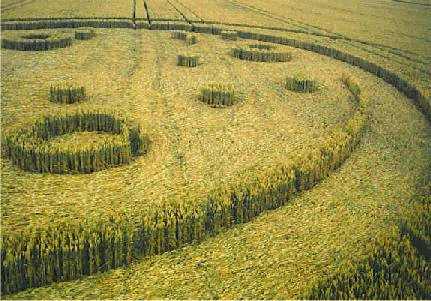
Fig. 4.3 The floor
lay of the 1994 galaxy formation (fig. 3.8)
showcases the
circlemakers’ precision.
The circle-making force can apparently
discriminate between the maturity of plants, for less mature plants,
whether standing in a row or scattered throughout the flattened
area, are sometimes left standing. The force also seems to be able
to select between plant species, for red poppies or thistles may be
left standing amid flattened barley or wheat. This feature, too,
rules out the use of planks and garden rollers.
The force is so precise that curtains of
wheat one stalk wide are sometimes all that separate one circle from
another.
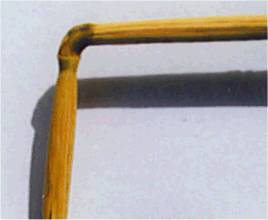
Fig. 4.4 A discolored
and stretched node with a 90-degree bend.
Biophysicist William Levengood
and a number of other researchers have discovered that flattened
plants frequently have enlarged nodes (the little ‘knuckles’ along
the stems of corn-type plants) and sometimes have ‘expulsion
cavities’ in the same areas, where moisture seems to have exploded
outwards. Seed germination trials have shown that when a formation
occurs in immature crop, the seedlings usually do not develop, or
their growth is severely reduced, but if a formation occurs in more
mature crop, the seeds grow at up to five times the normal rate.
(See next section.)
60% of circles appear on rainy nights. Yet farmers and researchers
often notice that there is no mud on flattened crop, which there
would have been if it had been flattened by humans using mechanical
implements. Moreover, readily crushable balls of chalk are sometimes
found intact beneath the flattened plants. And when a formation
occurs on soil containing small, sharp rocks such as flint, the
stems rest on top of the rocks without leaving crease marks, showing
that no weight has been applied.
The soil inside crop circles often shows differences with the soil
outside them. In one Canadian formation, for example, the soil had
been baked as hard as cement, whereas the rest of field was moist
and muddy. Reports of baked soil under flattened plants in crop
circles also come from other countries, such as Russia. In 50% of
crop circles the soil inside is noticeably drier than outside. (As
indicated in section 3, this was also reported by Robert Plot in
1686.) Many of the effects on plants and soil are consistent with
the generation of intense heat during the creation of crop circles.
Strange substances, such as jelly-like or powdery deposits, are
sometimes found on the plants and soil inside crop circles. Powdery
deposits that have been identified include high-purity silicon
dioxide, magnesium oxide, and magnetite (magnetic iron ore). The
latter may be meteoric dust, which is constantly drifting down
through the atmosphere to the earth’s surface; the concentration in
circles is up to 600 times higher than the normal value, indicating
the presence of strong magnetic fields around crop circles.
Nearly 90% of crop circles appear over aquifers and/or over chalk
and greensand (an olive-green sandstone). They are often aligned
with ancient sacred sites and with
ley lines or lines of earth
energy, as detected by dowsing. The positioning of crop circles is
sometimes undeniably nonrandom. For instance, three identical
whale-like pictograms from 1991 formed a perfect isosceles triangle
across several miles when linked with lines on a map.
Some formations seem to make use of tractor tramlines as guidelines,
but others don’t. Many formations have appeared in Canada, yet
Canadian fields are sprayed by airplanes so there are no tramlines
to provide hoaxers with easy access to the fields. In the UK,
pictograms often used to be surrounded with dozens of mini-circles,
or ‘grapeshot’, a couple of feet in diameter, located in places that
cannot be reached on foot without leaving obvious traces. Doug and
Dave’s pole-vaulting yarns have become comedy legend.
In the case of a small percentage of formations, both simple circles
and complex designs, there is clear visual evidence in the
newly-planted field of the previous summer’s crop circle. The new
plants in the area where the previous circle was located may be
shorter or taller than the surrounding crop or slightly different in
color. This effect usually lasts no more than two years after the
original formation.
Dead wild animals are rarely found in crop formations, but there
have been a few exceptions.
Some birds had apparently been caught up
in the creation of a 1993 formation, and had been blown apart and
disintegrated by the force. Mixed in with the blood and feathers
were minute bits of flesh, but there were no bones, or any
distinguishable or recognizable parts. Laboratory tests on some of
the remains confirmed that they belonged to an ‘exploded bird’.
Two dead porcupines were found in two different Canadian crop
circles. One had almost disintegrated into blackened parts and the
other had been squashed like a pancake. Scrape marks and a row of
standing broken quills indicated that the latter porcupine had been
dragged to the centre of the formation from the perimeter. The flow
of flattened quills on its body went in the same direction as the
lay of the fallen crop. Analysis of the other porcupine showed that
the blackness of the remains was not due to burning. Most animals
probably sense something is about to happen and run away, but
porcupines respond to danger by simply raising their spines and
sitting tight.
In one crop formation, numerous dead flies were found stuck by their
tongues to the seed heads of the plants, with their legs and wings
spread out widely, as if in a spasm. Some appeared to have exploded.
Other flies were still in a perfect state, but most were
nevertheless dead. Some were still alive but stunned, and after
being liberated from the plants, they flew away.
F. Grassi argues that a fungus (Entomophtora
muscae) is the most likely explanation, rather than some mysterious
circle-forming mechanism.
Back to Contents
5. Scientific research
The work of the BLT research team (consisting of John Burke,
William Levengood, and Nancy Talbott) has placed
crop-circle research on a firm scientific footing. Of the 300 or so
crop formations sampled and examined since 1990, more than 90%
showed anomalous effects in plant tissues and/or the soil. During
this period,
three research papers have been published in
peer-reviewed scientific journals,*
establishing that the creation of many crop formations involves
something much more intriguing than human pranksters with planks and
boards.
Skeptics have objected that much of the
BLT’s work has not been conducted in a double-blind manner (so that
experimenter bias might have influenced the results), but they
haven’t been able to show that the anomalous effects in question can
be produced by flattening crop by mechanical means.
*
W.C. Levengood, ‘Anatomical anomalies in crop formation plants’,
Physiologia Plantarum, vol. 92, 1994, pp. 356-63; W.C. Levengood,
‘Semi-molten meteoric iron associated with a crop formation’,
Journal of Scientific Exploration, vol. 9, 1995, pp. 191-9; W.C.
Levengood and Nancy P. Talbott, ‘Dispersion of energies in worldwide
crop formations’, Physiologia Plantarum, vol. 105, 1999, pp. 615-24.
As already mentioned, the forces involved in creating crop
formations physically alter the tissue of the flattened (and
sometimes the internal, upright) plants in several ways. Stalks are
bent up to 90 degrees without being broken, particularly at the
nodes, as if the plant tissue softened significantly at the moment
of flattening.
This is even true of oil-seed rape
(canola), which is normally as stiff and brittle as celery, and
snaps if bent more than 40 degrees.
 
Fig. 5.1 Marked
bending at the base of oil-seed rape plants.
Stalks of flattened crop are usually
enlarged and stretched, as if they have been heated from the inside.
Sometimes this effect is so powerful that the node literally
explodes, blowing holes in the node walls and spewing sap outside
the stalk. Node expansion is not always entirely confined to plants
within the flattened area of crop, as if some spillover of the
energy involved has occurred.
There are known mechanisms that explain
an increase in node length after a crop is flattened, such as
gravitropism (whereby a plant tries to straighten itself after being
pressed down), but some studies suggest that this mechanism cannot
account for node-length increases of more than about 20%, whereas
increases of up to 200% have been measured in crop formations.

Fig. 5.2 Comparison
of nodes within a crop formation (left) and from 75 feet outside it
(right).
Node elongation and expulsion cavities
have been induced in plants in the laboratory by placing them in a
microwave oven for 20 to 30 seconds. Microwave radiation heats the
moisture inside the stem which, as it turns into steam and expands,
either stretches the more elastic fibres at the top of the plant, or
blows holes in the tougher nodes farther down the stem.

Fig. 5.3 Expulsion
cavities in wheat.
In their 1999 article, Levengood and
Talbott argue that crop formations are created by plasma vortices,
which emit microwave radiation and thereby produce heat. In 2001
Eltjo Haselhoff wrote a comment on their article, pointing out a
couple of serious errors and arguing that crop formations were
created by a point-like or spherical source of radiation rather than
a plasma vortex.*
* E.H.
Haselhoff, ‘Dispersion of energies in worldwide crop formations’
(Opinions and comments), Physiologia Plantarum, vol. 111, 2001, pp.
123-4; Haselhoff, 2001, pp. 71-81.
He reported a study of plant samples
from two circles in the Netherlands, which appeared after lights
were seen above the field. Samples were taken along three diameters.
The greatest node lengthening was measured at the centre of the
formation and declined towards the rim. He concluded that this was
consistent with heat being induced by a small electromagnetic source
4.1 meters above the field.
A curious and unexplained finding was
that the node-length changes along each sampled diameter, on either
side of the circle’s centre, precisely mirrored each other, but each
diameter’s node-length changes differed from those found along the
other two diameters.
Grassi et al. have attempted to debunk the articles by Levengood,
Talbott and Haselhoff and their claim that electromagnetic radiation
is involved in the creation of crop circles. In particular, the
three researchers are accused of following flawed sampling and
analytical procedures, and of data selection. Grassi et al. also
contend that heating alone could not produce the node elongations
measured. Haselhoff has published a rebuttal of some of their
criticisms.*
*
F. Grassi, C. Cocheo and P. Russo, ‘Balls of light: the questionable
science of crop circles’, Journal of Scientific Exploration, vol.
19, 2005, pp. 159-70; www.cicap.org/crops/en. Response by Haselhoff
and further response by Grassi et al., Journal of Scientific
Exploration, vol. 21, 2007, pp. 576-82.
Germination tests show tremendous differences in the development of
seeds from flattened and non-flattened plants. If a crop circle
occurs before the flowering of the plant and the development of the
seed, the plant’s somatic (non-reproductive) tissue continues to
develop normally, but seed development ceases or is impaired. If a
circle occurs at a slightly later growth stage in young crop where
the seed is still forming, the seeds are smaller and stunted and
exhibit reduced or repressed germination.
In more mature plants, seeds are
visually stunted, but the effects on reproduction vary. In mature
plants with fully formed seeds, seeds often exhibit a massive
increase in vigor and a growth rate up to five times that of control
seeds.
Measurements in two crop formations only a few hours old revealed
that the stalks of flattened plants were left with a surface
electric charge. The degree to which the stalks were bent over was
proportional to the degree of electric charge on them. Studies show
that the cell wall pits in the thin bract tissue surrounding wheat
seed are abnormally enlarged and that bract tissue shows increased
electrical conductivity, consistent with exposure to an electric
charge.
Microscopic particles of unusually pure iron (assumed to be meteoric
dust) have been found in two thirds of the 32 formations from which
soil has been sampled. Sometimes clusters of these very small,
spherical, magnetic particles are found; sometimes larger spheres
are discovered adhering to bits of soil covered or intermixed with a
partially-melted glaze of the same material.
The particles are usually found
clustered around, or just outside, the perimeters of circular crop
formations, as if the centrifugal force from a spinning vortex is
distributing this material to the edges. But sometimes the particles
are concentrated in soil at the centers of circles, with amounts
dropping off toward the perimeters, while in other cases the
material is deposited linearly, usually in increasing amounts toward
the perimeters.
If crop circles are made by plasma
systems, this would explain the attraction of magnetic dust
particles, since plasma spiraling around geomagnetic field lines
creates its own magnetic field. But the different distribution
patterns of the magnetic dust are puzzling.
An
X-Ray diffraction study of clay minerals in crop-circle soils,
conducted by the BLT team from 1999 to 2001 with the assistance of
independent scientists, revealed that specific clay minerals (illite/smectites)
exhibit a subtle but statistically significant increase in the
degree of crystallization (i.e. greater ordering of the atoms).
Increased crystallization has never been reported previously in
surface soils. It has been seen only in sedimentary rock that has
been exposed to the pressure of tons of overlying rock and to heat
from the earth’s interior for hundreds or thousands of years.
Clearly, if geologic pressure had been
present, the crop-circle plants would have been obliterated. The
crystalline change could also be produced by intense heat (at least
6-8000°C over a period of many hours), but this would have
incinerated the plants.
The plants in the sampled circles showed the well-documented changes
(elongated nodes, expulsion cavities) regularly found in crop
circles not created by mechanical flattening. The plant changes and
increased crystallization occurred at the same sampling locations,
suggesting that whatever caused the plant changes, also caused the
soil changes. Yet the intense energy required to produce the soil
effects would have destroyed the plants altogether.
A mineralogist involved in the study
concluded that an energy currently unknown to science must be
involved.

Fig. 5.4 Geometric
and nongeometrically downed crop in the same field.
Areas of randomly flattened cereal crops
– called ‘lodging’ by farmers – are a common occurrence worldwide,
and are usually attributed to over-fertilization and/or weather
damage. Aerial photos frequently reveal areas of irregularly
flattened crops in the same fields as geometrically flattened
patterns. A very significant finding by the BLT team is that
non-geometrically downed crop sometimes shows the same bent and
elongated nodes that are found in crop circles.
This suggests that the same formative
forces are involved, but that sometimes they act chaotically rather
than in an ordered fashion.
Back to Contents
6. Eyewitness reports
There are many reports of balls of light, or discs or columns of
light being observed over fields in which crop formations are
subsequently found. Balls of light, usually varying from egg-size to
football-size, are often observed flying over circles already
present, sometimes weaving back and forth as if inspecting the
formation.
In one videotape shot in daytime, a hawk
dives straight down towards a fairly opaque ball of light, only to
veer away at the last moment when it realizes that the light is not
edible. Military jets and helicopters have been seen trying to
intercept balls of light, which then proceed to toy with their
chasers, sometimes blinking out and reappearing behind the craft
giving chase.
There are also several dozen accounts of a trilling sound being
heard prior to crop circles forming, and other reports mention the
sudden absence of the usual dawn chorus of birds and insects. In
July 1989 a BBC crew recorded a trilling sound with a frequency of
5.2 kHz in a crop circle. Other noises heard inside them include
buzzing, humming, hissing and high-pitched whistling.
Over the years, some 70 people have said they have witnessed the
formation of a crop circle. In almost every case only simple crop
circles are seen forming; virtually no one has witnessed the
appearance of a highly sophisticated pictogram. Most eyewitnesses
speak of a very powerful but localized force like a wind hitting the
field and spinning the crop down extremely rapidly, within about 10
to 20 seconds, usually in the early morning or early evening.
In 1931 a boy and a farmer in Essex, UK, witnessed a crop circle
form in a matter of seconds. The farmer attributed it to the
‘Devil’s twist’, a kind of whirlwind blamed for similar
manifestations in the area since at least 1830 (Silva, 2002, p. 4).
In July 1934, a woman was gazing over a field of corn when she heard
a fire-like crackling sound and saw a whirlwind in the centre of the
field, spinning stalks, seeds and dust up into the air for about 100
feet (Corliss, 1994, p. 270).
She found a perfect circle of flattened
corn, hot to the touch, the plant stalks being interlaced or even
plaited. The same whirlwind created a second circle about four
meters in diameter in the corner of the same field. The plaiting or
braiding of flattened vegetation is also observed in modern crop
formations.
One evening in July 1981, Ray Barnes witnessed a ‘wave’ or ‘line’
moving through the heads of a cereal crop in Wiltshire. After
travelling across the field in an arc, the line dropped to the
ground and radially described a 75-foot circle in a clockwise
direction in a single sweep in about four seconds, accompanied by a
hissing noise.
The crop went down as neatly as if it
had been cut by a giant flan cutter, and the plants showed
absolutely no spring-back (Corliss, p. 268; Pringle, 1999, p. 6). In
June 1989 a witness saw a big orange ball of light, about 30-40 feet
in diameter, descend into a wheat field in England. The bottom
flattened as it touched the crop and the ground, and disappeared a
few seconds later after a single bounce. The next morning a ringed
circle was found at the same spot (Haselhoff, 2000, p. 20).
Gary and Vivienne Tomlinson witnessed a circle forming at Hambledon,
Surrey, in May 1990 (Pringle, pp. 3-5). One evening, they were
walking by a wheat field when a whirlwind appeared, looking like a
shimmering mist, and making a tremendous noise. A strong gust of
wind pushed them from the side and above. They both felt tingly all
over and their hair was standing on end.
All at once the wind scooped them off
the path into the field. A two-meter-diameter circle formed around
them within a couple of seconds, growing outwards from the centre in
an anti-clockwise spiral. The whirlwind then split into two: the
first zigzagged into the distance over the top of the wheat while
the second formed a second circle nearby. It looked like a
transparent glowing tube stretching endlessly into the sky.
Miniature whirlwinds – small, glistening
vortices about four inches apart – had meanwhile appeared in the
circle they were standing in. They whirled around the crop in small
bunches towards the perimeter, gently laying the wheat down and
enlarging the circle. The whole episode lasted about seven minutes.
The couple felt lethargic and nauseous for a week afterwards, and
Vivienne suffered perforated ear drums.
In 1991 Martin Sohn-Rethel and his family, walking on downland near
Ilford in East Sussex, were almost knocked off their feet by an
invisible force, which then moved into the adjacent field, and swept
down a prefect circle in no more than 5 to 10 seconds (Thomas, 2002,
p. 29).

Fig. 6.1
Two
formations at West Overton, Wiltshire (July 1993).
The large ring
encircling the T-junction appeared first. Subsequently,
the long pictogram
appeared, and gained another circle the next night.
Witnesses who were
watching the field at about 2 am the night before the extra circle
appeared observed a
white mist move slowly across the field containing the pictogram.
The next day the
witnesses returned and saw that a new circle had been added (top of
the photo).
The new circle had a
standing centre of wheat stalks but, while they were examining this
new addition,
the plants in
the centre suddenly twisted around themselves and went down.
Nothing was heard or
seen to indicate what caused this.
In the night of 7 June 1999 a young
Dutchman noticed a small, pinkish-white light in the sky, which was
moving and seemed quite close. In just a few seconds it took on an
elliptical shape, and hovered about three meters above the ground,
while the faint light shone down on a field. The surrounding air was
trembling as if it were hot. Then the light slowly faded and
disappeared.
The young man ran into the field, and
discovered a fresh circle of flattened crop. He noticed that the
crop, the soil, and the air felt warm. Less than a week later, a
second formation appeared not far from the first. This time, a brief
flash of bright white, slightly bluish light was seen, which seemed
to emerge from a single point above the field.
Upon inspection, another circle was
found, which also felt warm (Haselhoff, p. 72).

Fig. 6.2 Tawsmead
Copse, Alton Priors, Wiltshire, 9 August 1998.
Two women saw
luminosities spiralling over the field where this formation was
found the next morning.
Four independent
witnesses, from a different vantage point, saw a light split into
three and move around the field;
in the moonlight they
could make out a shape appearing in the field (Thomas, p. 71).
In April 1991 a man heard a high-pitched
humming sound and saw a stationary silver bell-shaped ‘craft’
project a spiralling vortex of aura-like light into a field and make
a 29-ft crop circle. The event occurred in broad daylight and was
over in a few seconds.
In June 1996, intrigued by a buzzing
sound, a couple went out of their house at about midnight and saw
coloured lights swirling in the pitch-black sky above the East Field
(Alton Barnes). 20 minutes later the lights congealed into one
object from which a beam of white light descended onto the field.
Five hours later the ‘DNA’ crop glyph
was discovered (Silva, p. 140).
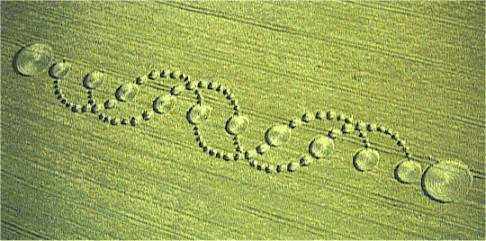
Fig. 6.3 The ‘DNA’
formation, Alton Barnes, Wiltshire, 17 June 1996.
In 1966, not far from the white cliffs
of Dover, a man saw a ‘translucent glass tube’ descend from the sky.
With the rain visibly deflecting off its surface and the nearby
livestock ‘seemingly transfixed’ by loud hissing sounds, the tube
created a circle in the grass. In 1990 a farmer tending his field of
barely found himself standing 10 feet from a 3-ft-thick rotating,
perpendicular tube whose earth-bound end stopped short of the
ground, while the other rose to a point out of view.
The tube remained stationary as a
swirling motion manifested in the crop. In August 2001 Nancy
Talbott and Robert van den Broeke saw a series of three
tubes of brilliant white light, eight inches to a foot in diameter,
flash down from the sky to the ground within about six seconds,
leaving a steaming ellipse with a T-shaped appendage in a Dutch bean
field (Silva, pp. 138-9).
On 11 August 1996, a man came forward with a video that he claimed
to have shot that morning during a crop-watch near Oliver’s Castle,
a fort in Wiltshire. It showed a ‘snowflake’ design forming while
balls of light circled overhead. The footage provoked bitter
controversy among crop-circle researchers. One group insists that
the crop design is man-made and the video a fake, and claims to have
obtained a confession from the person who made it, while others
still think that both are genuine (Andrews, 2003, pp. 139-43;
Thomas, pp. 60-1).
Whatever its true status, the video is
at the very least a good representation of what many witnesses have
described.
Back to Contents
7. Anomalous effects
There are numerous reports of electronic and mechanical equipment
breaking down in crop circles. Cameras frequently malfunction, and
even when they do work, the results may be overexposed, streaked,
smeared, or entirely black. Video equipment is also very vulnerable,
and often picks up severe interference. Battery draining is quite
common, and even fresh power packs can die. Cell phones often fail
to operate within a formation but sometimes work perfectly again if
taken outside it.
A combine harvester short-circuited as it crossed the Milk Hill Koch
fractal (fig. 3.12). At Warminster, a tractor’s entire electrical
system failed the moment it crossed a circle’s perimeter, but sprang
back to life as it was towed out of the circle. In another incident,
a tractor was seized by ‘static discharges which shone like sparks
over the body of the vehicle’. The next day, a circle appeared at
the same spot in the field. Farmers have also reported the deflating
of perfectly sound, heavy-duty tyres inside crop circles.
The morning after the appearance of the ‘Beltane wheel’ (fig. 9.2),
the BBC was conducting a radio interview inside the glyph but the
tape speeded up so much that it stopped. When the interview was
continued 50 yards outside the formation, the equipment worked
normally again. The experiment was then repeated inside the
formation, but the technical problems returned. Later in the day a
crew from ITV Bristol Television arrived, but their sound system
later turned out to have been so disrupted that most of the
recording was unable to be broadcast that evening.
Magnetic compasses frequently behave erratically both inside crop
formations and when flying directly over them. Witnesses sometimes
report TV, cell phone, smoke alarm and security device interference
or malfunctions during nights when a crop circle forms nearby. The
night before the appearance of the 1991 Barbury Castle tetrahedron
(fig. 3.6), residents in the nearby village of Broughton experienced
a power blackout and many residents reported balls of coloured light
flying above the field where the formation later manifested, along
with a low rumbling noise.
Watches and clocks may run fast or slow in crop circles. Some
writers see this as evidence that ‘time itself’ has slowed down or
speeded up, and have linked crop circles to ‘time warps’ and ‘space
warps’!
Certain photographic distortions have
been attributed to the same alleged causes. It’s quite conceivable
that anomalous energies and atmospheric conditions can affect the
behavior of watches, clocks, cameras and also light. But warped
notions such as ‘bent’ space and time are simply mathematical
abstractions and explain nothing. There is also a case of a pendulum
being pulled 15 to 20 degrees off the vertical in the centre of a
crop formation by some unknown force.
The effects of crop circles on humans vary widely. Many people
experience heightened awareness, elation, and a sense of peace and
wellbeing inside crop formations, and there are also many reports of
healing. But in certain formations some people experience nausea,
headaches, dizziness, disorientation, abnormal menopausal bleeding,
lack of mental clarity, and excessive fatigue. However, both
positive and negative effects have also been experienced in man-made
formations. Distinguishing subjective, psychosomatic factors from
possible objective factors (ranging from pesticide residues to
unusual energies) is no easy matter.
Unlike humans, animals are not very susceptible to suggestion, but
there are many accounts of them behaving strangely in or near crop
formations. Dogs sometimes refuse to enter crop circles, others
become either cowed and nervous or uncontrollable inside them, and
some become sick afterwards. Other dogs show no adverse effects at
all. Before the manifestation of a nearby crop circle, dogs have
been known to bark incessantly in the early morning hours, and in
one case a sheepdog tried to bite a hole through a thick wooden
door.
Sheep sometimes try and move as far away as possible from a field
where a crop formation later appears. Horses may refuse to cross the
perimeter of crop circles, or become nervous in their vicinity.
Flocks of geese have been observed to break formation directly over
crop circles, and deer have been seen avoiding crop circles blocking
game trails.
Birds, too, tend to stay away from
genuine crop circles, even though the downed plants offer easy
access to seeds.
Back to Contents
8. Geometry
In the early 1990s astronomer Gerald Hawkins (who died in 2004)
discovered that the ratios between the areas or diameters of the
various elements making up crop patterns clustered around certain
whole numbers: 2, 4, 5, 7, 9, 11 and 12. These are the numbers used
to generate the diatonic ratios that define the relative frequency
of the white notes of a piano keyboard.*
*
Starting with middle C on the piano, the frequency of each
succeeding white note of the musical scale increases according to
the following ratios: C 1, D 9/8, E 5/4, F 4/3, G 3/2, A 5/3, B
15/8, C’ 2. The ratio r = 2n/12, where n is a number between 0 and
12. The white-note diatonic ratios occur when n is 0, 2, 4, 5, 7, 9,
11, and 12, while numbers 1, 3, 6, 8, and 10 generate the black-note
diatonic ratios.
Based on an analysis of the ratios
embodied in 25 crop circles, he calculated that there was a 1 in
400,000 chance of them arising by chance. Apart from bird calls and
the song of a whale, diatonic ratios do not occur in nature. Hawkins
concluded that crop designs demonstrated the remarkable mathematical
ability of their creators. He wrote to Doug and Dave to ask them why
they’d used the diatonic ratios – but never received a reply! (See
Haselhoff, 2000, pp. 57-61, 139-40; Silva, 2002, pp. 193-200.)
Hawkins discovered that the various ratios could be expressed in the
form of four mathematical theorems based on the principles of
Euclidean geometry, though they are not to be found in Euclid’s own
work. He also discovered a fifth, more general theorem, from which
the other four could be derived. He challenged the readers of
Science News and The Mathematics Teacher to come up with his
unpublished theorem, given only the four variants, but no one
succeeded. In July 1995 a version of the theorem appeared, encoded
in the Litchfield ‘Torque’ crop circle.
The fifth theorem involves concentric
circles which touch the sides of a triangle, and as the triangle
changes shape, it generates the special crop-circle geometric
ratios.
Fig. 8.1 Hawkins’
five theorems:
1. tangent theorem,
2. triangle theorem,
3. square theorem, 4.
hexagon theorem,
5. general theorem,
where expanding and contracting concentric circles give all the
diatonic ratios.
It’s difficult to make crop formations
that obey the theorems in the dark, but the makers of authentic crop
formations manage to work to a tolerance of 1%. Hawkins’ work was
published during the early phase of the phenomenon, but he found
that later, more elaborate designs still yielded the diatonic
ratios.



Fig. 8.2 The
positions and sizes of all the elements of this crop formation (Oud-Beijerland,
the Netherlands, 1998)
are harmoniously
related to one another and/or to the tramlines, in accordance with
Hawkins’ theorems.
Flattened crop is
coloured yellow. (Janssen, 2004, pp. 83-4; Haselhoff, pp. 61-3)
The following reconstructions illustrate
the highly complex geometry embodied in many modern crop formations.
(For further examples,
click here.)

Fig. 8.3 The 1994
‘Web’ (fig. 3.9) is based on fivefold geometry.
Two pentagrams fit
perfectly into the formation (Jansen, pp. 77-80).

Fig. 8.4 Melick, the Netherlands, 18 July 1997.
Threefold, fourfold,
fivefold, and sixfold geometry are hidden between the circle and its
three successive rings
(Janssen, pp. 22-3;
Haselhoff, pp. 64-7).


Fig. 8.5 Sunflower, Woodborough Hill, Wiltshire, 13 August 2000,
made out of 308
triangles of standing crop.
It is composed of 44
spirals based on phi (φ) or the golden mean (ratio 1:1.618),
a spiral that is
difficult to draw, even on paper (Silva, p. 111).
If the lay of the flattened plants in a crop formation is examined
closely, pathways of crop about a foot wide are often found beneath
the general lay. They tend to have a different flow direction, and
look like ‘construction lines’. Clearly, the lines must have been
put there by some intelligence, but this does not automatically mean
the patterns were made by humans using mechanical implements. It’s
interesting to note that the guidelines needed to reconstruct crop
patterns on paper pass through areas of what, in the fields, would
be standing crop.
These sections of the construction lines
can be rubbed out on paper, but not in the crop itself.

Fig. 8.6 One of the
first crop circles based on sevenfold geometry appeared
at Tawsmead Copse,
near Alton Barnes, Wiltshire, 9 August 1998 (fig. 6.2).
The white lines in
the diagram on the left represent the construction lines found in
the actual formation.
The diagram on the
right shows the same formation but with all the heptagrams and
heptagons needed to reconstruct it.
In other words, only
two of the many heptagrams and heptagons were present in the final
design (Janssen, pp. 66-72).

Fig. 8.7 Final stage in Bert Janssen’s reconstruction of the
‘dolphins’ formation,
Barbury Castle,
Wiltshire, 23 July 1999 (pp. 47-9); for photo, see below.
Two triangles are
absolutely necessary to align and construct the crescents, but both
are missing in the final design.

Back to Contents
9. Hoaxers and debunkers
On the whole, the mass media have mis-educated and misinformed the
public with their negative and biased coverage of the crop-circle
phenomenon. The emphasis has been on dramatic stories about hoaxes
rather than serious investigation.
Crop-circle researchers have sometimes
been induced to visit fake circles and when some fell into the trap
of rashly pronouncing the formation to be authentic, this was used
to ridicule the entire phenomenon. This is like saying that since
some people have been deceived by imitation pearls, no genuine
pearls exist!
Researcher Eltjo Haselhoff was once interviewed inside a crop
circle. Part of the interview went like this:
Q: Is this a simple natural
phenomenon, you think?
A: Not likely. The design is too complex and unlike anything
else we see in nature.
Q: Could it be man-made?
A: Of course.
Haselhoff carefully avoided saying
anything definite about the authenticity of the formation. At the
end of the interview, the three men who had made the formation in
collaboration with the landowner turned up, and Haselhoff
congratulated them on their efforts.
This was not the scenario the
program-makers had in mind, so the interview was edited before the
documentary was broadcast so that Haselhoff appeared to say the
exact opposite of what he actually said:
Q: Could it be man-made?
A: Not likely. The design is too complex and unlike anything
else we see in nature.
Some crop-circle debunkers have even
resorted to sabotage. In one incident, iron filings were sprinkled
on the flattened stems inside a crop circle, after which the
chemical analyses performed on the plants and soil were ridiculed.
Such desperate and unscrupulous tactics are perhaps a sign of how
insecure some debunkers feel. There are also cases where
mischief-makers have added post holes in formations that were
probably authentic to make them look man-made.
A crop-circle surveillance operation called Operation Blackbird,
organized by Colin Andrews and Pat Delgado, was carried out in July
1990 near Bratton Castle, where many crop circles had appeared. The
land is owned by the British Ministry of Defense, and two army
officers with high-tech cameras assisted the operation.
On the second night, Andrews received a
call saying that a complex crop design had appeared and been
captured on film. Even before examining the formation, he unwisely
announced to the media that the formation was authentic. Upon
inspection, however, it turned out to be a poorly-made fake; a
horoscope game board and wooden cross had even been left in the
middle of the main circle, presumably to point the finger at
new-agers.
Evidence later emerged to suggest that
the British Ministry of Defense had ordered the creation of a hoax
pattern in an effort to discredit the phenomenon and the
researchers. Ten days after the fake formation had been made, a real
crop circle appeared in the field below Bratton Castle in a swirling
motion lasting less than 15 seconds, but the video tape was later
removed from a locked box by persons unknown (Andrews, 2003, pp.
131-6).
In the immediate aftermath of the Doug and Dave scam in 1991, the
number of hoaxes rose sharply. The next couple of years saw numerous
pale imitations of genuine designs, including smiley faces, obscene
words, stick figures, and an ejaculating penis. Since then, several
groups of hoaxers have developed more impressive circle-making
skills. But even the better man-made efforts lack the complexity of
lay, layering and flow observed in genuine formations. Hoaxes can be
neat, but usually lack harmonious geometrical proportions; hoaxers
tend to dismiss the sacred geometry found in many crop circles as
coincidental and insignificant.
Hoaxers are also unable to reproduce the biophysical anomalies found
in genuine crop formations, such as unbroken stalks with elongated
nodes and explosion cavities. Man-made formations all have weight
applied in some degree to the crop, leading to broken and damaged
plants. In a genuine formation, the seeds are not knocked out of the
seed heads and the plants seem to continue growing as normal.
Another major problem is the amount of time available to make
formations. Even just drawing some of the more complex designs on
paper requires great time and effort. Transferring these out in the
fields would demand extensive measurements – and surveyors have
estimated that it would take several days to stake out the most
sophisticated patterns. Yet crop formations normally appear
overnight, and half-finished or abandoned formations are relatively
few in number even though the fields of southern England are scoured
from the air every day during the crop-circle season.
The Stonehenge Julia Set (fig. 3.11) appeared in broad daylight
within a 15-minute time-window. Eyewitnesses report seeing simple
crop circles form in under 20 seconds, and it may be that the
flattening process in authentic complex crop glyphs takes the same
amount of time, though how long it takes to prepare them (and by
what means) is unknown.
Several major crop glyphs, sometimes
almost identical, have been known to appear over fairly wide areas
on the same night.

Fig. 9.1 ‘Triple
Julia Set’, Avebury Trusloe, Wiltshire, 29 July 1996.
196 perfectly graded
circles spiral out from the centre and extend to a diameter of over
1000 ft.
Joining the centres
of corresponding circles in each of the three arms
with three lines
generates a series of equilateral triangles, spiralling, rotating
and expanding from
the centre outwards with awesome precision.
A US surveying
company stated that to mark out the Triple Julia Set
to this degree
of accuracy would take three to five days,
adding two days for
calculation time and another three if working at night.

Fig. 9.2 ‘Beltane wheel’, oil-seed rape, Silbury Hill, Wiltshire, 14
May 1998.
This 33-flame design
appeared between 3 and 5 am. Its centre lies 20 feet into
undisturbed crop.
Claiming to have made a crop formation
is always a lot easier than actually making one. Hoaxers have laid
claim to highly complex authentic formations they had nothing to do
with. For instance, three pranksters calling themselves ‘Team
Satan/Circle-makers’ claim to have made the Stonehenge Julia Set.
Hoaxers rarely provide any evidence of
their supposed exploits, and sometimes they discredit their claims
by exposing their ignorance about certain features of the formations
they supposedly made.

Fig. 9.3 Hoaxed
‘Flower of life’, Alton Priors, 1997.
Measuring errors have
produced a total mess.
Some hoaxers concede that there is a
genuinely paranormal crop-circle phenomenon at work, alongside the
hoaxing, and even claim to be inspired by the real circle-making
forces. Some of them have experienced anomalous sounds and lights
out in the fields.
On one occasion, when a team went back
to check a circle they had made earlier, they discovered a new
circle in the same field and saw an orange ball of light emanating
from it. Another group had just started making a crop formation when
two balls of light appeared and chased them out of the field.
Additions made to hoaxed formations sometimes result in them
complying with the sacred geometry ratios found in real formations.
In the summer of 1991, Terence Meaden and a team of Japanese
scientists had a field under surveillance with electronic equipment,
including radar, magnetometers, night-vision video, and motion
sensors. Obscured by mist, a small dumbbell formation appeared, yet
none of the sensing equipment registered any intruders. An army
officer stationed in the training grounds of Salisbury Plain once
came across a crop circle in an active minefield.
In 1995, a five-petalled star appeared at composer Andrew Lloyd
Webber’s country residence at Kingsclere, despite the property being
manned by a 24-hour security team. With the extensive grounds rigged
with sensors and microphones, a research team looking for the
pictogram was apprehended within minutes of their arrival. But
nobody had been caught making the pattern. Webber was on holiday at
the time and his security staff rang to tell him what had happened.
Convinced that all crop circles were fakes, he was furious, and
demanded to know how the hoaxers had got in.
When he was told that it seemed there
had not been any hoaxers, he burst out crying!

Fig. 9.4 The
beautiful crop formation
that moved Andrew
Lloyd Webber to tears – even though he never bothered to look at it.

Fig. 9.5 Complex design of crescents based on eight-fold geometry,
Ogbourne St. George,
Wiltshire Downs, 15 June 2003.
As with the West
Overton glyph (fig. 3.20), the plants were unusually laid:
in the central
circle, a central spiral motion rotated outwards in eight movements,
with stems barely touching the ground;
in between, the
remaining plants appeared to have been gently pushed approximately
20 degrees from the vertical.
It was as if someone
had simply brushed their hand lightly over the young wheat.
As the plants
recovered, they rose in alternate segments along different nodes,
producing a ripple
effect that seems to be unhoaxable.
It is notable that there are relatively few cases of hoaxers being
caught in action. Only one man has ever been prosecuted for making a
crop circle, because usually no satisfactory evidence of hoaxing is
ever produced to justify a prosecution. The man in question was
fined 140 pounds in 2001 after making the mistake of faxing a copy
of his design to a US radio talk show host before making it.
Some hoaxers obtain farmers’ permission
for their ‘crop art’ beforehand and pay them a sum of money.

Fig. 9.6 In 1994
science-fiction writer Arthur C. Clarke
hired five artists to
make a 90-ft, 10-petalled flower for a documentary debunking crop
circles.
It took two days to
make the small design in bright sunlight,
leaving every plant
crushed and dozens of holes pockmarking the clay soil.
The above
reconstruction by Freddy Silva (2002, p. 194) reveals
the
discrepancies between the geometry on the ground (white) and that
required by the pentagonal design (black).

Fig. 9.7 In 1998 the National Broadcasting Corporation (NBC) paid
Team Satan to make a crop circle in New Zealand.
The finished result
looked impressive from the air.
But the formation was
harvested as soon as filming stopped, and not a single researcher
was allowed to inspect the lay of the crop.
Ground photographs
showed a mess of broken and crushed stems;
they were so
revealing that they were quickly removed from the internet.
The above picture
shows how the whole design fails to hit much of the
triangular/hexagonal geometry
(Silva, p. 92).
The NBC documentary failed to show, or even mention, that the
hoaxers had used artificial lighting suspended from two 40-ton
cranes. Nor did it mention that the entire design had been marked
out with stakes and string prior to filming. Even then, it took over
five hours to make – longer than the number of hours of concealing
darkness in summer.
The level of hoaxing fluctuates considerably. In recent years, it
seems to have been on the increase, especially after the release of
several films and documentaries about crop circles in 2002.
Estimates by different crop researchers of what percentage of each
season’s formations are hoaxes can vary enormously, from just a few
per cent being hoaxes to just a few per cent being genuine! The
formations that hoaxers claim to have made usually make up around
10% of a season’s glyphs, but the percentage of formations that can
be proven to be man-made on the basis of solid facts is often far
smaller. In 2004, 14% of worldwide crop formations are known for
certain to have been man-made.
It is noteworthy that Levengood and his team have found biophysical
anomalies that cannot be explained by mechanical flattening in 90%
of the 300 or so formations they have examined, which include
complex glyphs as well as simple circles.
Unfortunately, it is impossible to take
samples from every crop formation to check for such anomalies,
because this is a very time-consuming and extremely costly process
which needs to be conducted according to strict scientific
protocols.

Fig. 9.8 West Kennett
Long Barrow, Wiltshire, 10 August 2004.
National Geographic
hired Team Satan to make this formation for another
program
debunking crop circles.
It took the three men
five hours to make in broad daylight.
Their work was filmed
by a time-lapse camera on a crane.
Back to Contents
10. Human interaction
In several instances, crop circles seem to have appeared in direct
response to the wishes of individuals or groups of individuals, or
to comments made by them. The forces or intelligences behind the
phenomenon seem to be aware of or influenced by what certain people
are saying and thinking.

Fig. 10.1 One night
in 1988 Colin Andrews asked silently for a Celtic cross
to appear as
close to his home in southern England as possible.
The exact formation
he had visualized appeared the next day in the closest unharvested
field,
four or five miles
from where he lived (Andrews, 2003, pp. 32-3).
On 24 July 1992, 18 members of the US-based alien contact group
CSETI conducted an outdoor experiment in which they visualized the
CSETI logo appearing in the sky and in a field; the logo consisted
of three circles in a triangular pattern connected with paths. The
same symbol manifested in a wheat field at Oliver’s Castle the next
day.
A meditation experiment on top of
Wolstonbury Hill, West Sussex, on 28 June 1995 by members of
Southern Circular Research was followed by the appearance that night
of a formation having the shape they had projected. It appeared at
Felbridge, in the same county but not exactly where it had been
predicted (Thomas, 2002, pp. 44, 151-2).
When filmmaker William Gazecki arrived in England to start filming
his documentary Crop Circles: quest for truth (2002), he asked for a
crop circle to appear. One appeared right outside his bedroom window
that night. On another occasion, inventor and engineer Mike Curry
left a surveillance operation at Blackland, Wiltshire, after
witnessing a dumbbell crop formation appear in a field fully
monitored and protected by cameras and infrared beams. The pattern
appeared in a small bank of fog without any intruders being
detected. Curry left the site asking himself whether this could
happen anywhere and at any time. He woke up the next day to find the
identical crop design in the field outside his bedroom window.
One day, while flying over southern England, pilot Busty Taylor
commented to Colin Andrews that he would love to someday find
all the previous crop designs wrapped into one stunning new
formation. Such a formation appeared the next day, just below where
the aircraft had been when Taylor expressed his wish (Andrews, p.
162).
Back to Contents
11. Explanations
In the 1980s meteorologist Terence Meaden suggested that small,
local whirlwinds of ionized air, or plasma vortices, created by
freak weather, were responsible for making crop patterns. As
multiple circles with multiple rings began to appear, often arranged
symmetrically and with their relative sizes displaying diatonic
ratios, Meaden’s theory began to look increasingly far-fetched. He
held that spinning vortices would form in dry, quiet weather and
only on the leeward sides of hills. But new crop formations soon
contradicted this by appearing in all manner of topographical and
weather conditions.
Intricate crop lays presented further problems. In one
54-ft-diameter circle, for example, the plants were whirled in
standard clockwise motion, but this time laid toward the centre,
with a thin band around the perimeter swirled anticlockwise and
pointing away from the centre. Furthermore, when the stems were
lifted, a second layer was found underneath, flattened counter to
the top one. Meaden stuck to the weather explanation, arguing that
the whirlwind had abruptly switched its rotation direction.
The circle-makers later replied by
creating a formation with two annular rings around a circle, each
element in contra-rotation to the next.

Fig. 11.1 ‘Swastika’
design, Winterbourne Stoke, Wiltshire, 12 August 1989.
It was laid in four
quarters, each segment swept outwards in a different direction.
Overlaid in the
centre was 9-ft-diameter swirl whose plants abruptly
changed direction
three times before reaching the quadrants.
Around the perimeter
a 3-ft-wide clockwise band lay partly beneath the quadrants.
Given this woven
effect, the circular patch of plants was seemingly synchronized to
collapse simultaneously.
This formation dealt
another severe blow to Meaden’s theory.
In early 1990, a 300-ft-diameter circle orbited by 3 rings, each 6
inches wide, developed a fourth ring several days later, making a
pattern 1000 ft wide. It is highly unlikely that a descending plasma
vortex could have returned to add a perfectly sited geometric
feature to a week-old design. The arrival of the pictograms in 1990,
comprising straight lines, rectangular boxes, semi-circles and
‘claws’, posed even greater challenges to Meaden’s theory.
By the time of the Barbury Castle
tetrahedron of 1991 (fig. 3.6), the theory that all crop circles
were made by simple, natural vortices, without any guiding
intelligence, was essentially dead. Instead of admitting this,
Meaden chose to dismiss any formations his theory couldn’t explain
as hoaxes!
The BLT research team’s theory of how crop patterns are made agrees
with Meaden’s in several respects. They propose that patterns are
formed by self-organized ion plasma vortices, but that these are
non-meteorological plasma systems which originate in the ionosphere,
a region of low-energy plasma beginning about 40 miles up in our
atmosphere. It was long believed that the ionosphere and the earth’s
surface were completely unconnected, but electrical flashes (or
sprites) are now known to occur commonly between thunderheads (8
miles high) and the ionosphere.
The BLT team suggests that such
plasmoids sometimes reach the ground, especially in the predawn
hours, and that as they descend, the magnetic pinch effect causes
them to shrink in size and spin faster.
The team proposes that the same causative agency lies behind the
creation of non-geometric crop designs, where the same bent and
elongated plant nodes are found as in genuine crop circles. Although
plasma spontaneously organizes itself into a vortex, if the energy
level gets too high the vortex pattern breaks down, and the forces
discharge unstably and chaotically.
The team argues that certain crop lays can be explained as a result
of two interacting plasma vortices with opposing rotation. But what
about all the numerous other intricate and multi-tiered lays? It’s
doubtful whether very brief bursts of intense microwaves emitted by
plasma systems can fully explain elongated nodes and expulsion
cavities, and they certainly cannot explain the increased degree of
crystallization of clay minerals in crop-circle soils. The
correlation between these two phenomena strongly suggests that
whatever caused the increased crystal growth in the clay minerals
was also responsible for the plant abnormalities. Moreover,
microwaves can render soil and plants sterile, but this is very
rarely observed in crop circles.
Freddy Silva has suggested that ultrasound and infrasound may be
involved in making crop formations. Sound waves could trigger vapour
cavitation inside plant stems, creating local temperature increases
of 5000 K for a fraction of a second. Silva argues that this could
bend stems, especially around the base where water concentration is
highest. This hypothesis has not yet been tested
The clear evolution of crop-circle designs over the past two or
three decades cannot be explained by a purely natural, random
phenomenon. Even simple designs display geometric ratios that are
unlikely to be entirely coincidental.
And a purely spontaneous energy system
is hardly likely to add geometric features that complement an
earlier design. Plasma most commonly organizes itself into a spiral,
and the next most common pattern is a swirled disc surrounded by
concentric rings. But as the BLT team concedes, ‘It strains the
imagination to think how some of the more elaborate patterns might
arise from sheer plasma physics.’
Eyewitness reports of crop circles forming, together with the
varying effects crop formations have on humans, animals and
equipment, suggest that crop circles are not all created by exactly
the same mechanism. Sometimes crop is flattened by the violent
movement of air, and funnels or tubes of light reaching down from
the sky are seen, sometimes lights are seen in the absence of any
whirlwind, and sometimes crop is seen to collapse without any clues
as to the nature of the forces involved.
The fact that plant tissues seem to
become supple at the moment of flattening and that clay minerals in
the soils undergo enhanced crystallization indicates that
unconventional energies are involved. Spontaneous plasma vortices
might be responsible for non-geometrically downed crop and for some
of the plain, unadorned circles. But there appears to be some form
of intelligence involved in planning and executing complex designs.
As for the balls of light often seen around crop circles, the
question remains as to whether they are making them (guided perhaps
by some higher intelligence), exploring them, or utilizing their
energy. Some light-forms act like inquisitive creatures or
bioforms.
Tubes of light might indicate that crop patterns are projected down
onto the ground from above. Some formations appear without any
strange luminosities being observed, but it should be borne in mind
that psychics report seeing lights that are invisible to our
physical senses.
Some people have argued that crop circles are communications from
extraterrestrials. Flattened crop was once attributed to the landing
of flying saucers. When it was noted that crops were swirled down
instead of being crushed, the effect was attributed to the energy
fields of the crafts’ drive systems. When the formations became more
complicated it was suggested the aliens might be using energy beams
to create them, or sending out probes, in the form of balls of
light, to make them.
There are reasons to think that the UFO phenomenon has more to do
with interaction between our physical level of reality and the
forces and entities of the astral or etheric realms surrounding and
interpenetrating our earth, than with visiting ‘flesh-and-blood’
creatures from other planets (see
UFOs: the psychic dimension).
There are certainly parallels with the
crop-circle phenomenon – the involvement of luminous aerial
phenomena being the most obvious example. As with certain crop
circles, highly compacted soil has sometimes been reported in
locations where UFOs have landed, and intense bursts of microwaves
have been proposed as a potential candidate for the energies
involved. Both UFOs and crop circles can cause malfunctions in
electrical equipment. And animals often react strangely at or near
the scene of UFO encounters, just as they do in the case of crop
circles.
Both crop-circle and UFO manifestations tend to cluster in certain
locations, e.g. near geological fault lines and water sources. A
large proportion of UFO sightings occur over the chalk lands and
aquifers of the Wessex triangle in southern England – which is also
the main centre of crop-circle activity. According to dowsers,
formations tend to be located in areas where lines of earth energy
cross or are very strong, and these energy-rich sites seem to
facilitate the manifestation of crop circles.
Some people believe that many crop formations are made not by aliens
but by the military, using secret energy-beam technology. The
military have certainly shown an interest in crop glyphs and the
mysterious balls of light (and in UFOs in general). But there is no
reason to think they have any greater understanding of such
phenomena than the public at large.
A more promising line of enquiry, being
pursued by many researchers, is to look towards unusual earth
energies, etheric and psychic forces, and higher intelligences
capable of interacting with our own individual and collective minds
– but earth-bred and from inner space, rather than from outer space.
The intelligence involved could be human (whether manifest in
physical form or not), but the beings concerned must in any event be
able to exercise paranormal powers and control nature’s subtler
forces (‘elementals’ or ‘nature spirits’) with the utmost precision.
These subtler energies may in turn generate measurable electric and
magnetic effects on our grosser, physical level.
The fact that deformed and expanded
plant nodes are sometimes found in standing crop both within crop
formations and just outside them, while the edges of a formation
tend to be crisp and precise, indicates that the creation of a crop
formation might involve two stages: first the crop is ‘primed’ or
‘programmed’ to fall in a particular direction, and then the
energies are unleashed that cause the plants to collapse, and these
energies may spill over the actual boundaries of downed crop.
Back to Contents
12. Meaning
Many people believe that crop formations carry a symbolically
encoded message. As with mythology, symbolism appeals to our
imagination and is open to different interpretations. But most
researchers would agree that crop formations are ‘mandalas of hope’
for our troubled world.
The basic element of crop glyphs is the circle, which can symbolize
unity, boundless space, and the universal creative spirit or
god-force. Crop circles with rings and satellite circles sometimes
resemble diagrams of the chemical elements, with their orbiting
electrons. For instance, a central circle orbited by four satellites
(quintuplet) symbolizes the carbon atom, with its four outer
electrons, as well as being reminiscent of a Celtic cross.
Two circles of differing sizes joined by an avenue can signify
communication between the physical and spiritual worlds, while the
absence of a joining line may signify a broken connection. A solid
circle sometimes represents the male principle, and a ring or a
circle with a ring the female principle. Joined by an avenue, these
become symbols of the sacred marriage. However, if the arrangements
of circles, rings, bars, avenues, claws, etc. found in the complex
pictograms of the early 1990s represent a precise symbolic language,
no one has managed to decipher it.
It is noteworthy that some of these crop
designs also appear in ancient petroglyphs (Silva, 2002, p. 146).

Fig. 12.1 Earth
goddess symbol from 2000 BC and pictogram at Chilcomb, 1990 (Silva,
p. 151).
Sacred geometry has taken on a key role in the increasingly complex
crop glyphs that have appeared since the early 1990s. Two
overlapping circles produce a vesica piscis, emblematic of
the conjunction of spirit and matter, and associated with the
Piscean Age.
Some glyphs represent the squaring of
the circle, signifying the fusion of spirit and matter.
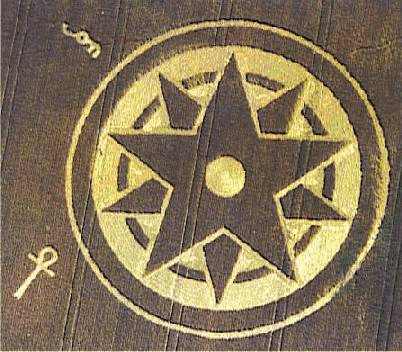
Fig. 12.2 Pentagram
variation, Dadford, Buckinghamshire, 4 July 1998.
Spirals, triangles, pentagons and
pentagrams, hexagons, heptagons, octagons, etc. are all found in
crop formations, each with its own symbolic connotations. An
equilateral triangle, for example, can represent completion.
Three-dimensionally it becomes the tetrahedron (four-sided pyramid),
a key hermetic symbol, and a prime bonding pattern of matter. One of
its best-known crop-glyph representations is the 1991 Barbury Castle
tetrahedron (fig. 3.6).
In ancient alchemy, balls on the tips of
a tetrahedral triangle signify the three prime alchemical elements:
salt, sulphur, mercury. The five-pointed star or pentagram (which,
like the pentagon, displays the golden-mean ratio) symbolizes the
human being, since a human figure with outstretched limbs fits
within it.
The six-pointed star or interlaced
triangles (also known as Solomon’s seal or the sign of Vishnu)
represents universal spirit and matter.
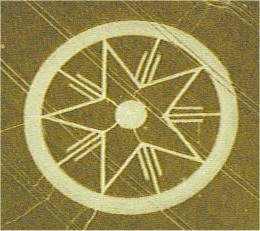
Fig. 12.3 The
Pythagorean symbol of wellbeing, Bishops Cannings, Wiltshire, 12/13
July 1997.

Fig. 12.4 Ninefold formation with six-crescent vortex, Cherhill,
Wiltshire, 18 July 1999.
The spiral-shaped Stonehenge glyph (fig. 3.11) can represent several
things: the computer-generated fractal known as the Julia Set; the
base clef symbol used in musical notation; the spiral shape found in
the nautilus shell and many other natural forms; and a mammalian
skeleton with the correct number of vertebrae.
Some have likened the interlocking
spiral motif of the Triple Julia Set (fig. 9.1) to the Tibetan
Buddhist symbol called the ‘wheel of joy’ (or gakyil), which
symbolizes the primordial energy and also the three stages to
enlightenment spoken of in Dzogchen teachings.

Fig. 12.5 The Tibetan
wheel of joy and its crop-circle counterpart (Silva, p. 162).
Despite the widespread resistance to viewing crop formations as
anything other than a man-made joke, they have left an indelible
mark on our culture. Their stunning beauty, geometrical grace,
multicultural symbolism and mysterious origins seem intended to
intrigue, enchant and inspire us. There appears to be a creative
intelligence behind the majority of crop formations, but one which
prefers to remain anonymous, and to leave anyone who is paying
attention to draw their own conclusions, like some sort of
intelligence test or intuition test.
Crop formations have been called ‘temporary temples’, and it is
fitting that they should show an affinity for places which for
millennia have been centers of worship and spiritual focus. In South
Africa, crop circles are called ‘great circles of the gods’; when a
circle appears, people erect a fence around it, and perform dances
and other sacred rituals honoring the earth mother and the star
gods.
Colin Andrews has said that ‘crop circles are giving us all a
spiritual nudge’, ‘a push towards the higher aspirations of peace
and enlightenment’. ‘We are being challenged to learn,’ he says,
‘and the tools of our instruction are ancient spiritual symbols,
mandalas, and other innate, natural patterns. ... [W]e are being
given a wake-up call and it is our responsibility to acknowledge the
message, and take action’ (2003, pp. 164-5).
There is no telling for how much longer crop formations will
continue to manifest in such great numbers and in such complex
forms. Will they continue to evolve? Each year people wonder just
how much more complex they can get, and every year the glyph-makers
continue to spring surprises with their inventive genius. At some
point – when their purpose is done or the stimulus runs dry – the
glyphs will probably wind down again to rare appearances. Andy
Thomas (2002, p. 174) writes:
Let’s enjoy the formations while we have them and validate their
significance simply by the fact they are gorgeous to look at, having
made many very happy and left us carved a little deeper and a little
wiser by the questions and issues they have raised. ...
For one thing everyone agrees on, even the most committed skeptics,
is that wherever they come from, the glyphs are art of the highest
order. ...
If grace and beauty are all the crop circles have brought into our
world, we have reason enough to be thankful.

Fig. 12.6 Flower with
sixth petal not yet unfolded, Golden Ball Hill, Wiltshire, 14 July
2000.
Back to Contents
13. Sources / credits
Books
-
Colin Andrews, with Stephen J.
Spignesi, Crop Circles: Signs of contact, Franklin Lakes, NJ:
New Page Books, 2003
-
Jerome Clark, Unexplained! 347
strange sightings, incredible occurrences, and puzzling physical
phenomena, Detroit, MI: Visible Ink, 1993
-
William R. Corliss (comp.), Science
Frontiers: Some anomalies and curiosities of nature, Glen Arm,
MD: Sourcebook Project, 1994
-
Michael Glickman, Crop Circles,
Glastonbury, Somerset: Wooden Books, 2005
-
Eltjo H. Haselhoff,
The Deepening
Complexity of Crop Circles: Scientific research & urban legends,
Berkeley, CA: Frog Ltd, 2000
-
Bert Janssen, The Hypnotic Power of
Crop Circles, Enkhuizen: Frontier Publishing, 2004
-
Lucy Pringle, Crop Circles: The
greatest mystery of modern times, London: Thorsons, 1999
-
Andy Thomas, Vital Signs: A complete
guide to the crop circle mystery and why it is not a hoax,
Seaford, East Sussex: SB Publications, 2nd ed., 2002
-
Freddy Silva, Secrets in the Fields:
The science and mysticism of crop circles, Carlottesville, VA:
Hampton Roads Publishing Company, 2002
Video/DVD
-
Steve Alexander, Karen Douglas and
Rob Luckins, 65 Days: The crop circles of 2003, Temporary Temple
Press Ltd., 2004
-
Michael Glickman and Patricia
Murray, The Crop Circles: History & geometry, Crop Circle
Radius, 1997
-
Bert Janssen, Crop Circles: The
research, Bert Janssen Productions, 2001
Back to Contents
|







































































